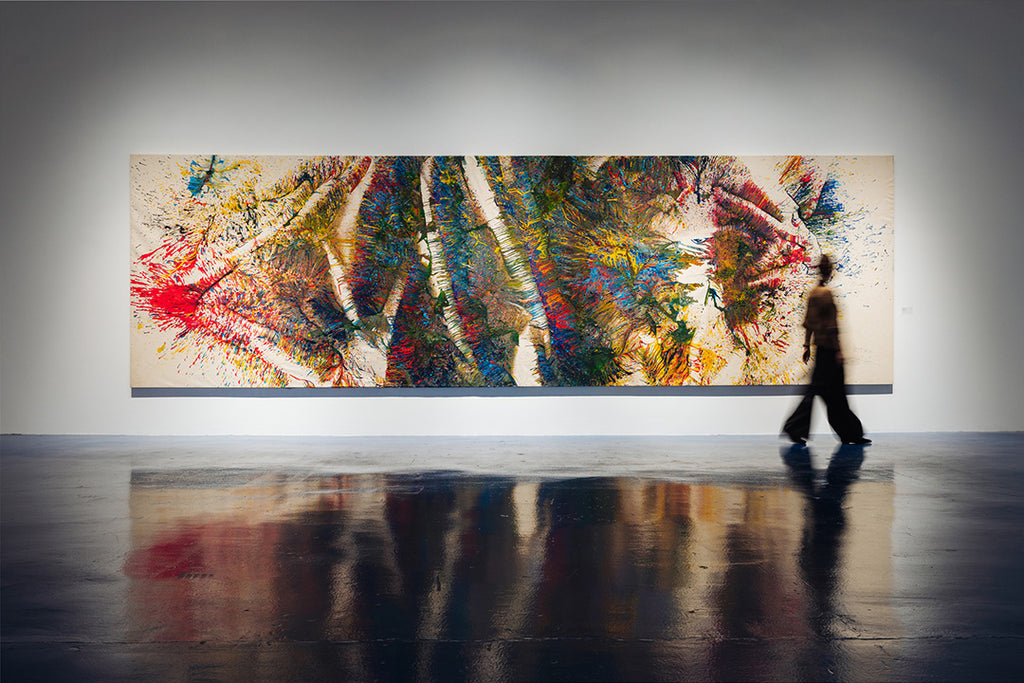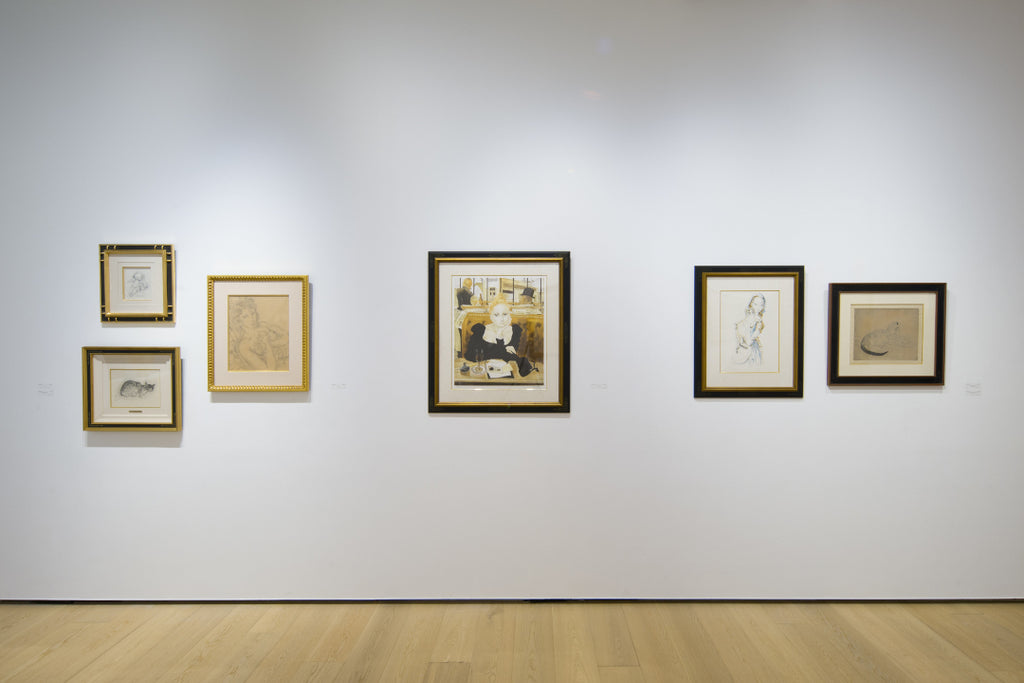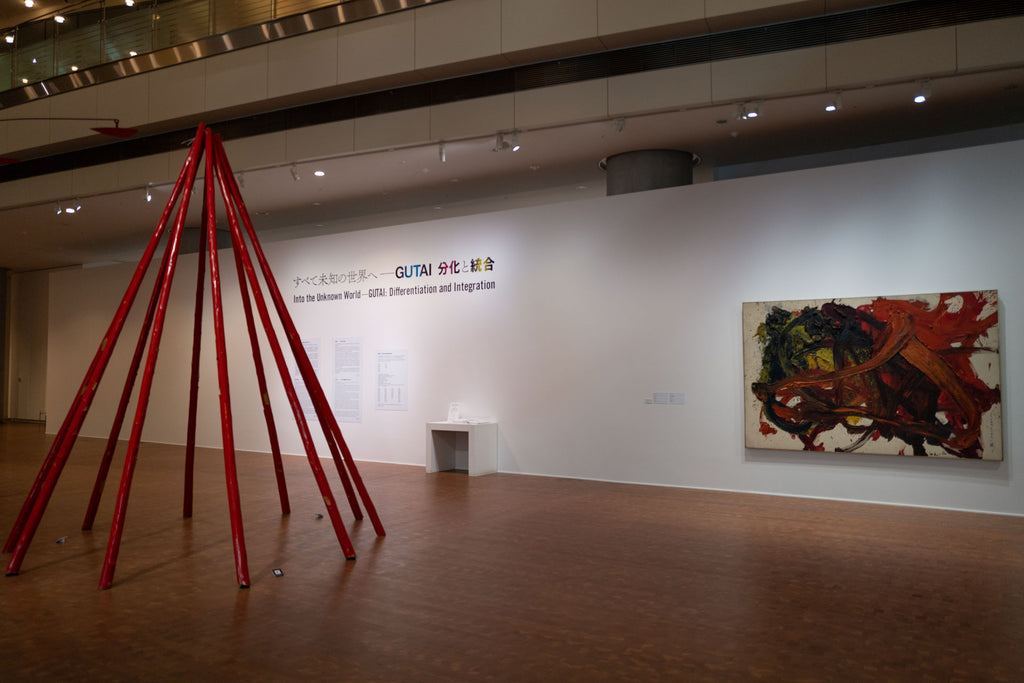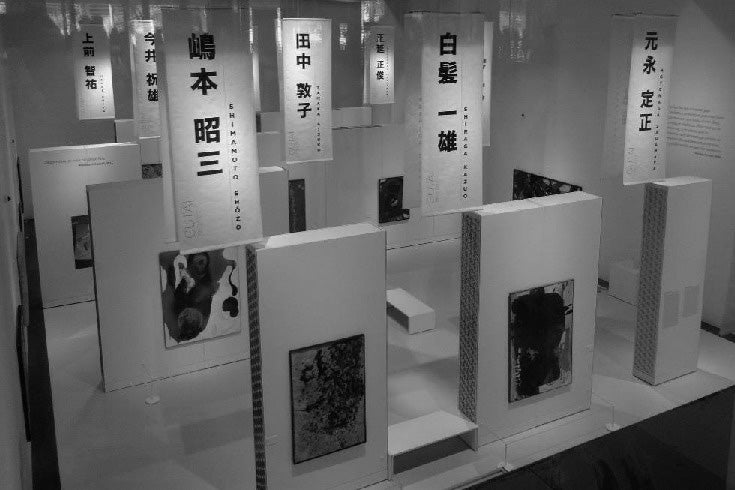ARTICLES
Interview with the Son of Jiro Yoshihara, Leader of the “Gutai” | The Father from the Child’s Perspective.
GUTAI STILL ALIVE 2015 vol.1
03/35

“Gutai-jin in Karuizawa” at Karuizawa New Art Museum
A project evolving the digitized archive of the book, "GUTAI STILL ALIVE 2015 vol.1". In this third installment, we present an exclusive interview with Jiro Yoshihara’s eldest son, Shinichiro Yoshihara, who has been an advisor to the Gutai and was in charge of translating correspondences with outside parties into English. Shinichiro, who's now an employee of the Yoshihara Seiyu oil company, speaks of his father's art from various perspectives.
Memories of a Strict Father According to Jiro Yoshihara’s Eldest Son, Shinichiro Yoshihara
“I am indebted to the firm teaching of my father even to this day”
In November 1968 Jiro Yoshihara took up a new home and studio in Ashiya city. And still to this day there stands a bust of his own father, Sadajiro Yoshihara in the entrance way, with a heavy set atmosphere of the Yoshihara family home, now guarded by Jiro’s eldest son, Shinichiro.
While Shinichiro was Jiro’s eldest son he was also an advisor to the Gutai group and supported his father’s work in this way. On this occasion we visited to his house in Ashiya and learnt of his relationship with his father.
Shinichiro was born in August 1931, when his father was 26 years old, 3 years after graduating from the business course of Kansai University and having recently held his first solo exhibition. While he aimed to become an artist he was also responsible for the family oil company Yoshihara Seiyu, and as such this time was marked by many significant steps.
As we are shown into the reception room a wonderful butterfly collection catches one’s eye. This is the collection of Shinichiro inspired by his father’s instruction in insect collecting.
Shinichiro Yoshihara: I went to an ordinary school and one summer holiday I decided to base my school project on insect collecting. My father also showed some interest in this. At that time Ashiya city was still in development and towards the mountains there was plenty of natural land. He took me there and with the air of going on a picnic we went off searching for insects. There were butterflies, dragonflies, rhinoceros beetles, even small but curious tiger beetles, which my father taught me, were poisonous.
Insect collecting was not a particular focus of Jiro Yoshihara’s hobbies, but rather it reflected his wide curiosity which brought him to follow so many interests. From model trains to imported cameras such as Leica and Contax, he enjoyed many products of the age. Even in his later years he could be found making gasoline powered model airplanes. And if interpreted widely we may say that the very acts of taking photographs, building collections and making models were all part of his creative engagement. That is not limited to the narrow confines of “art” but pays testament to his wide ranging pursuits which may be said to have fueled the very approach of Gutai.
Shinichiro continued to develop his butterfly collection from then on. In fact he one day had the opportunity to catch a rare butterfly, the “Hypolimnas Bolina”, which only lives in the Yaeyama islands, which had somehow lost its way to the family garden. He has continued this hobby passed down to him by his father.
In his interview Shinichiro introduced many topics in his recollections but then came onto the main subject of his father’s artistic pursuit.
Shinichiro Yoshihara: While I was still a young child, after we had finished dinner my father would yell “Let’s draw!” and bring out a whole collection of paper, crayons, compasses, protractors and triangular rulers from the studio. Michio (later to become a founding member of Gutai) and I would sit at the round table and be moved with curiosity as how to use all these materials, asking where to put the pencil in the compass for example. Father would also be drawing alongside us and looking at my picture
would say “That’s looking good, keep going!”
After that time in the studio of the previous house we would often watch our father working from behind. When we did this he would often ask “Shinichiro what do you think?” “Michio, how is it looking?” At that time if you didn’t say something innocently childish then he would become quite angered. “If you are a simple child then say something befitting a child”, he would say. If one made a slightly unnatural expression then he would be out of sorts.
There was also this episode. After the war in Ashiya there were a lot of occupation forces around with their families and their children would come round to play. In this way I could naturally mix with their parents. I think it was around the time I had entered university but as part of the English boom I started talking with the American soldiers in English. And amongst this exchange my father was asked to paint someone’s portrait. So I took home the precious uniform in a plastic bag and set it up in the studio and studied it along with the photograph. My father didn’t know the man so he could only paint from the photograph. But he seemed to leave out certain wrinkles and make the man look younger. Then when he asked me “Shinichiro, what do you think?”, if I didn’t give him my honest estimation he would be upset. He taught me to avoid giving insincere opinions.
When asked what kind of father Jiro Yoshihara was Shinichiro retorts “a very strict one”.
Shinichiro Yoshihara: He was such a very strict father. But after the war he was changed. I remember him once saying “A father’s position and authority have been taken away now so I can’t say anything”. This sounded so melancholy to me. I said to him “Please be the father you have always been to me”, as I was much indebted to his strict teachings.
When Jiro Yoshihara founded the Gutai group in 1954 Shinichiro also acted as an advisor.
Shinichiro Yoshihara: When the group was first established myself and my brother Atsuo both acted as advisors to my father. For myself I was to be his English translator. For example when the group wanted to contact the American artist Allan Kaprow, who had been introduced by Tapié, Gutai member Toshio Yoshida(1928-1997), who was also working for the advertising department of the family company, wrote the letter in Japanese and I would translate it. I wrote this not in the usual formal style but with a mix of the kind of “Come Everybody!” English I had gleaned from the American soldiers. When I showed this to my father he said “Your English is perfect”. However when he was angry he would accuse me of not being able to speak Japanese properly. At first I shrank from this but as I realized how much this taught me I was very grateful.
Shinichiro saw the attitude of his father as the founding member of Gutai and his strictness as a father to be one in the same.
Shinichiro Yoshihara: His disciples like Shozo Shimamoto(1928- 2012) would make some large scale work and drive it over in their car but father would just reject them out right and they would return home him their heads hung low. He wouldn’t even say why he thought the work “useless”. He said this later on but he was the captain with his members on the Gutai “ship”. As the members dived into the deep sea and made new discoveries, bringing up something to the surface the captain would look over this with anticipation. He would say “Don’t imitate other people, be yourself, discover something by own strength”.
For Shinichiro his father was not just the leader of the Gutai group, he was also the director of the family business Yoshihara Seiyu. Shinichiro was also an employee of the company and in this way he observed Jiro as both art devotee and business manager.
Shinichiro Yoshihara: It was as if he had a foot in two different shoes. It was most unusual. It was a stock market registered company so he had to meet with the leading share holders and respond to their questions. But he was very efficient and I heard staff making praising comments as to his handling of the meetings. He was not only involved in the advertising design of the company but also contributed to the design layout of the new factory in Kobe for example and the responsive design of the products. He aptly followed his position as both artist and company director, but that was no easy thing to achieve.
Father would always speak of his early days and the environment in which he grew up in. He undertook business studies at the Kansai University but in fact for most time he admitted he was concentrating on drawing. His classmate who sat in front of him would later turn out to be the director of Asahi Kaikan Hall, and father said he constantly drew his likeness during lessons. He would often tell such witty stories. He was thoroughly devoted to art, but he never neglected his work as company director.
Jiro Yoshihara moved to the house which Shiniciro now presides over in 1968, and for Jiro it was to be the studio of his final years. Above the reception room on the second floor was the studio space. And it was here that Jiro created his most renowned work the “Circle” series.
Shinichiro Yoshihara: I very rarely entered that studio when my father was at work here. Even the cleaning he did himself or else my mother would help. He wouldn’t let anyone else do it. While he was making the studies for “Circle” he drew as he liked in this space (the reception room), and when it came to the final piece he would lay out the materials on the studio floor and meticulously create the circle. He often worked on the floor but he did use an easel for some pieces such as “Happy Mystique”, which while filled with paint drips was executed in such a way. My father said that the “Circle” series was a collision between all he had lived, his self and the canvas. He said people are free to see this circle as calligraphy, as an image of Zen, there is no rule. But he asked us not to define it in terms of Zen practice.
On the morning of 18th January 1972 Jiro Yoshihara received a phone call from the Embassy of the Netherlands to discuss an upcoming exhibition overseas, but as he was talking his words failed him and he lost consciousness.
Shinichiro Yoshihara: He was still so full of ideas for the world, so it was a great shock to us. Before he passed away he was asked in an interview about his future plans and he had responded with “I don’t want to be pinned down by my associations with Gutai, I want to move across numerous genres and pursue ever new developments”. If he had been alive today he would have been well over 100 but in my imagination he continues to engage in a vast range of cultural activities.
In recent years the Gutai movement has enjoyed a renewed following internationally, with many surprised that such a force to rival those of Europe existed in Japan at that time. But it is also important to examine how the 1905 born Jiro Yoshihara spent his life. Although we are unable to go into the full depths here we hope to have conveyed a glimpse of the man beyond the artist.
(Mothly Gallery, September 2013)
Read more about the “Gutai Art Association »
*Information in this article is at the time of publication.



